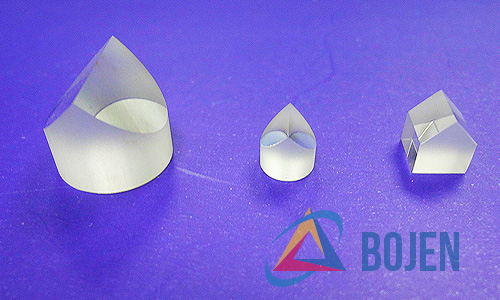| Scratch & Dig: | 80/50~40/20 |
| Flatness: | 1λ~λ/4 |
| Beam Deviation: | 6arc min ~ 3 arc min |
| Number of Polished Faces: | 3 |
 Porro prisms are most often used in pairs, forming a double Porro prism. A second prism, rotated 90° with respect to the first, is placed such that the beam will traverse both prisms. An image travelling through a Porro prism is rotated by 180° and exits in the opposite direction offset from its entrance point. Since the image is reflected twice, the handedness of the image is unchanged.
Porro prisms are most often used in pairs, forming a double Porro prism. A second prism, rotated 90° with respect to the first, is placed such that the beam will traverse both prisms. An image travelling through a Porro prism is rotated by 180° and exits in the opposite direction offset from its entrance point. Since the image is reflected twice, the handedness of the image is unchanged.
In operation, light enters the large rectangular face of the prism, undergoes total internal reflection twice from the sloped faces, and exits again through the large rectangular face. Because the light exits and enters the glass only at normal incidence, the prism is not dispersive.
Double Porro prism systems are used in small optical telescopes to re-orient an inverted image, and especially in many binoculars where they both erect the image and provide a longer, folded distance between the objective lenses and the eyepieces.


